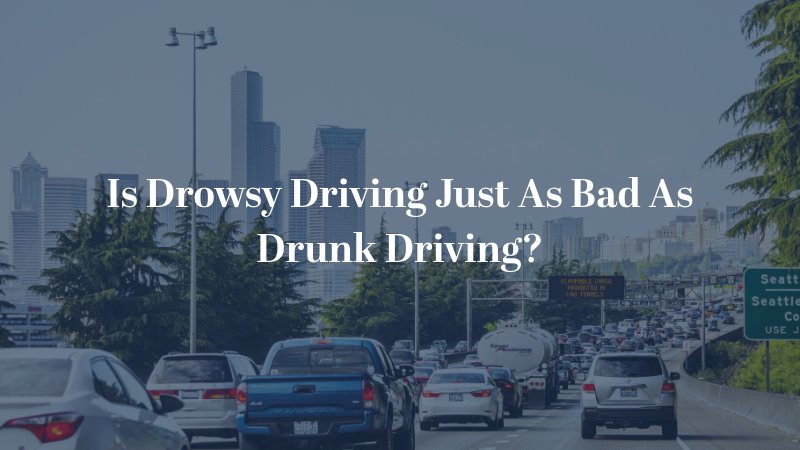
The Sleep Foundation warns drivers that drowsy driving and drunk driving share similar alarming characteristics, including delayed reaction times, impaired judgment, and decreased alertness. Adults require seven to nine hours of sleep per night to function at their best. A AAA study shows that missing three hours of sleep per 24-hour period more than quadruples a driver’s risk of an accident.
Although every state strictly enforces intoxicated driving laws, there are no laws expressly prohibiting drowsy driving. How does drowsy driving compare to drunk driving, and is it just as dangerous to drive while fatigued as it is to drive under the influence of alcohol?
Startling Statistics on Drowsy Driving vs. Drunk Driving
National Safety Council studies show that one out of every three working Americans suffer from sleep deprivation, leading to a growing number of serious car accidents related to drowsiness and falling asleep behind the wheel. The alarming statistics include the following:
- Police reports across the United States revealed about 91,000 drowsy driving crashes in a single recent year while there were only 10,346 drunk driving accidents reported that same year
- Drowsy driving plays a role in about 21% of fatal car accidents
- Over half of Americans admit to consistently getting behind the wheel while feeling fatigued
- About 37% of those surveyed admit to at least one instance of falling asleep behind the wheel in the past month
- 13% of those surveyed admit to dozing while driving in the past month
- Although most drowsy driving accidents occur between midnight and 6:00 AM, the second most common time for drowsy driving accidents is in the late afternoon
Falling two hours short of the recommended minimum of seven hours of sleep leaves a driver with a similar degree of impairment as drinking three beers. Driving after only four hours of sleep is similar to driving at the legal limit for blood alcohol concentration (BAC) of 0.08%. Additionally, studies show that staying awake for extended periods has similar effects to drunk driving. After 20 hours awake, drivers experience symptoms similar to driving at the legal limit for blood alcohol, while driving after 24 hours of wakefulness is like driving with a BAC of 0.1%. Some medications cause drowsy driving even in those with adequate sleep.
What Are the Physical and Cognitive Impacts of Drowsy Driving?
Drowsy driving and drunk driving have some differences and similarities. While drunk driving has a greater impact on decision-making and risk-taking behaviors, drowsy driving has a greater impact on the physical ability to drive. A drowsy driver may experience some or all of the following symptoms:
- Frequent yawning
- Heavy eyelids
- Frequent blinking
- Blurred vision
- Inability to remember the last few miles driven
- Wandering thoughts
- Drifting out of the proper lane
- Hitting rumble strips or reflectors on the side of the road
- Tailgating a driver in front
- Missing exit signs
- Nodding off and jerking the head back up
- Frequent slowing and accelerating
Experiencing any of the above signs means a driver has a significant impairment behind the wheel and should find a safe place to pull over as soon as possible. A twenty-minute nap, followed by caffeinated beverages, a brisk walk to increase oxygen flow, and sugary foods work to supply temporary energy so a driver can reach a safe destination for sleeping but do not replace a full night’s sleep.
Contact Lightfoot Law Today If You’ve Been Injured From A Drowsy Driver
If you’ve been in a car accident with a drowsy, or even drunk driver, a lawyer who has experience handling these cases can be your advocate during this difficult time. Be sure to contact the Washington D.C. car accident lawyers from Lightfoot Law, PLLC today or call us at (202) 919-5453 today.